
By Sarah Ambrose
The time to embrace change in education is right now! In fact, it’s long overdue. Did you know that the model for modern-day public education was created by the need for on-time mechanical workers during the Industrial Revolution? That was certainly a technological disruption, but it happened 250 years ago. It’s what we call the front-lead method, and it’s not the best model for addressing the learning needs of many students: divergent thinkers, neurodiverse minds, creatives, scientists, and the list goes on. Which brings us to our next point: it’s time for the next wave of disruption. Luckily for us, it’s here. And it’s been here since 1989, when Tim Berners-Lee — a British scientist from CERT — invented the World Wide Web. We know you use the internet every day, and it’s great, but maybe you’re skeptical that it can revolutionize education. Well, if you didn’t know, it already is.
A large body of evidence-based, peer-reviewed work points to the web as one of the central hubs for positive educational change today. It’s our connection to others, our access to a world of educational resources, it’s a format that works for many learners, it’s at the heart of countless services (that don’t work in an unconnected world), and it’s driving access to education.
Of course, the following 20 Top Books on Education Technology will elucidate all of that to an even greater extent (as well as with humor, fun, and step-by-step guides on how to do this right now). You will learn about how social media can be an asset to education, how to focus your learners through matters of attention, engage your students with exceptionalities, and move yourself out of the limelight and into a position that truly motivates your students to learn. This is the essence of education.
And it’s largely enabled by technology and the teachers who know how to use it. Don’t be rendered obsolete. As an educator, you are far too precious to do that. But do take a gander at these books and continue on the path towards educating these very interesting, quirky, and funky “digital natives.”
1.)One World Schoolhouse: Education Reimagined by Salman Khan
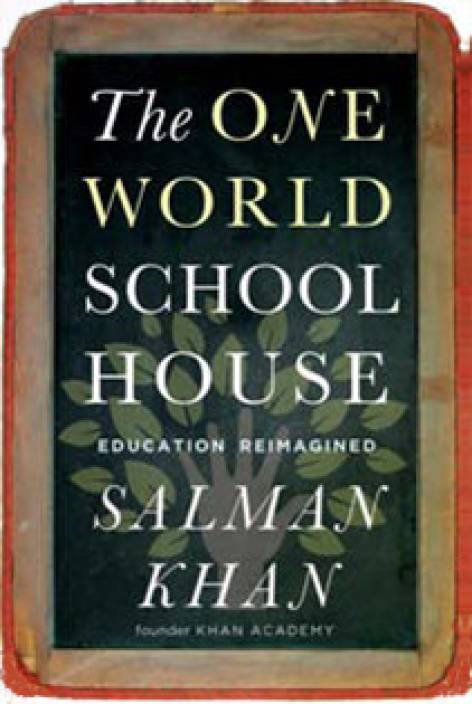
Maybe you’re an educator and have tried to nurture the strengths of each of your students but feel confined to the curriculum, the pressures of the administration, and even the pressures of other teachers. We live in unsure times for education, and more than ever seem ready to embrace something new. One World Schoolhouse: Education Reimagined may be that “something new” we have all been waiting for. Educator and entrepreneur Salman Khan (founder of Khan Academy) saw how education failed his relative with no apparent reason. The young girl mentioned at the start of the book is described as “logical, creative, and tenacious” and yet still faced with a slippery dilemma- a dilemma thrust upon her by orthodox, cookie-cutter educational mandates created over 200 years ago. Without the same restrictions, Khan helped that young woman find academic success.
You may ask, success at what academic? What is academic success? Is it just learning to continuously pursue passions and turn those passions into practical impacting meaning? Well, it looks different for everyone, and that is absolutely the point of Khan’s vision. Finding success does and will continue to diversify as does the world. Part of finding that success means access: is the material readily available, is it affordable, is it manageable, is it going to motivate the individual to learn more? In Khan’s case, yes, yes, yes, and yes! One World Schoolhouse is not the “self-driving car” of the humanities.
This model is all about human interaction and the intersection with technology, and how educators become part of this revolution. Ready for a socially significant change in the field of education? Try this book.
2.)Flip Your Classroom: Reach Every Student in Every Class Every Day by Aaron Sams & Jonathan Bergmann

When I was a graduate student at University College London, I received key information on how to become a “guide on the side”- an element that would certainly shape my approach to teaching in the inner city of New Orleans many years later. In Flip Your Classroom authors Jonathan Bergmann and Aaron Sams show you exactly how to become that guide on the side rather than the looming dominant adult or the “Charlie Brown teacher”, and assist students to become the masters of their own education. Student-paced learning is discussed, as is, of course, the role of technology and how it truly relates to the ideal phrase “no child left behind.”
What if there was no timeline to begin with, and the deadline for one student was determined by them (and not the other way around)? And imagine your classroom time is actually used to hash out where the problems still lie? That means jumping right out of the hamster wheel and onto a personalized track, a track that doesn’t leave a child behind. Flip Your Classroom may be that book that puts the “ahhh” in “ah ha!” for any teacher who faces the illogical and often frustrating conundrums present in the profession.
And, while Sam & Bergmann work within an ideal setting, don’t be put off by that! There are still fantastic methods available within these pages to show you how you, too, can incorporate technology and use it to augment the learning experience of your students. Now, if we could only find a book for the looming hawk-eyed administrator.
3.)Out of Our Minds: Learning To Be Creative by Sir Ken Robinson

Author and Arts in Education advocate Sir Ken Robinson, known for his famous TED talk “Do Schools Kill Creativity”, as well as books The Element and collaborative work Creative Schools brings us his latest edition of Out of Our Minds: Learning to Be Creative. In the latest edition, Robinson will discuss how to educate adults in the work force as he explains that — in contemporary society — even Fortune 500 companies are seeing the value in creative thinkers. The globalized world, he argues, calls out for divergent minds to address contemporary social issues.
No, we didn’t place this book on the wrong review- creativity and technology are not mutually exclusive, right? Robinson discusses technological changes, nanotechnology, E-business, in addition to the importance of mining for talent where it truly lies, in everyone. Have we lost the spark of creativity, or are we unsure of where to find it?
Out of Our Minds is a road map for teachers who are through with the cookie cutter school house and ready to take their learners of great discovery- knowing the true potential of their own minds. This book is a must-have reference for any educator whether K-12 or otherwise who is looking to reach all types of learners.
4.)What Connected Educators Do Differently by Todd Whitaker and Jeffery Zoul
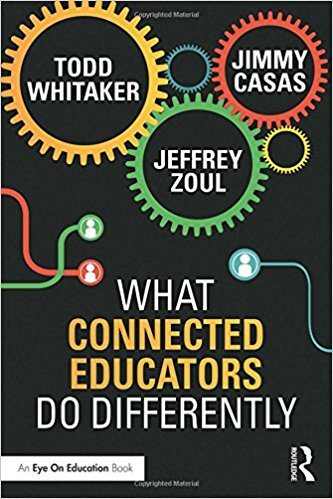
Author Dr. Todd Whitaker, educator Dr. Jeffery Zoul, and administrator Jimmy Casas team up to present this phenomenal resource for individuals looking for ways to healthily engage with technology in the emerging collaborative-learning classroom. Learn to develop a learning network and build a learning community that promotes ideas and positivity in a world with an ever-increasing problem of cyberbullying.
Technology (and particularly social media) will not be curtailed and must be embraced to truly reach all kinds of learners. If this feels like an exciting endeavor or a daunting one, What Connected Educators Do Differently is a great choice as Casas, Whitaker, and Zoul step you through it, well, collaboratively. This is a great resource for those who are just embarking on the path towards connectivity as well as for educators who have a grasp of social media but may be looking for new ways to wield this powerful tool and make a global impact on the educators of other and themselves. Additionally, we really enjoyed the section on “when to unplug” and the balance this brings to the overall work.
5.)A New Culture of Learning: Cultivating the Imagination for a World of Constant Change by Douglas Thomas
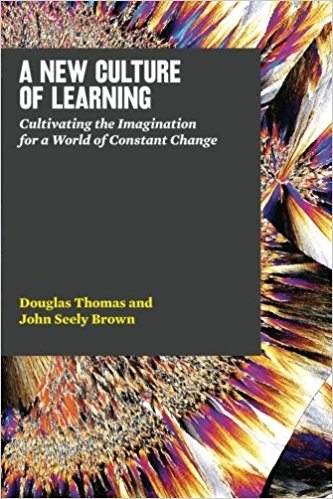
Professor — and expert on “the intersection of technology and culture” — Douglas Thomas teams up with scholar, artist, and “Chief of Confusion” John Seely Brown with this ever-relevant work A New Culture of Learning. This book is for every educator who understands the value of innovation in today’s culture. With the focus on play, imagination, and, of course, technology, Thomas and Brown provoke the reader to imagine a new “culture of learning” with its access to almost limitless knowledge through evolving social structures.
As in other ranked books, Thomas and Brown urge the reader to address a collaborative approach to education and note how that can actually readily be achieved through technology in appropriate learning environments. That is, in learning environments that naturally embrace a wide diversity of learners. As we all are faced with the “tsunami of change,” Thomas and Brown guide the reader through tangible ways to ride this revolutionary wave rather than get swept under it.
These are not entirely new ideas- collective learning and collaboration- rather the contents of this book serve as a fresh reminder as to why we should engage with technology to carry on the traditions of common wisdom education through play, hanging out, “geeking out” and through “shared imagination”.
6.)Curriculum 21: Essential Education for a Changing World edited by Heidi Hayes Jacobs
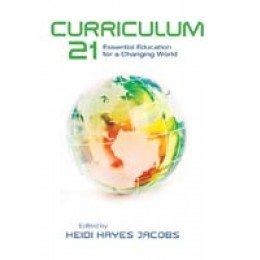
Curriculum 21 is a collection of articles that challenges educators across the globe to think about “what it is we want our students to know and to be able to do?” Heidi Hayes Jacobs explains not only the value in an updated curriculum, but also the “whys” and the “hows.” Jacobs uses plain speech to challenge the American curriculum. She proposes that an overhaul is necessary to truly prepare students for their future. But the future is always changing. How can we truly predict what will come next in these rapidly evolving times?
Like we mentioned earlier, the content of the book outlines a method for connecting students to relevant contemporary information and how to access it when it does change through 21st Century: Assessment Types and Skills, Socio-Technology Trends, Making Learning Interesting (a skill that can be taught), and Creating Learning Connections with Today’s Tech-Savvy Students. If you’re ready to foster education for digital natives, then snatch up this book instantly. We think it may take a permanent place on your (standing) desk.
7.)The World Is Open: How Web Technology Is Revolutionizing Education by Curtis J. Bonk
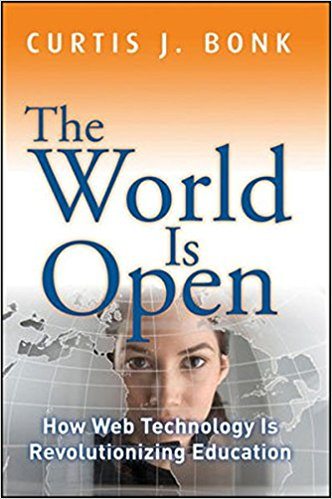
Massive Open Online Courses (MOOCs) focus on unlimited access to education through the web. Some of the best universities in the world offer MOOCs. Professor and author Curtis J. Bonk analyzes this very topic of the State of the MOOC in The World Is Open. He then looks at how we can (and should) make the most of this exciting prospect for the 21st-century climate. Bonk examines “Learner Rights,” a concept that explores the learning environment, true collaboration, access to content and more. He also addresses “learner responsibilities” and walks the reader through every step ensuring that when you close this book you are equipped to engaged with the process of education with agency. He recognizes the impact individuals have on the globe, and the responsibility we have to our own education and to other.
These may seem like abstractions, but Bonk’s book is tangible and not impractical in the least. Because — in a sense — we have contact with the entire globe right at our fingertips. E-Learning and Blended Learning styles are currently titled non-traditional learning and rightly so. But as we’ve seen just in the first few reviews of books, traditional definitely doesn’t mean good for all types of learners. Again we see how a digital approach to education is an accessible and collaborative approach. In the words of Bonk a “portal for the people.”
8.)Teaching Digital Natives by Marc Prensky
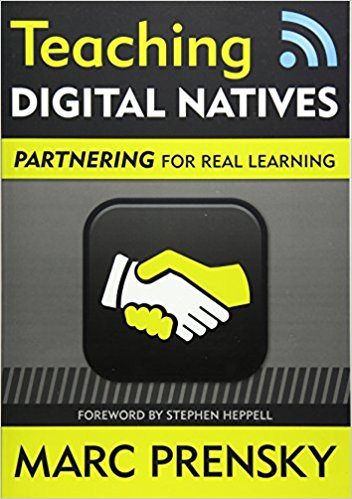
I recall my first year as a student teacher. It was in inner city London and the assignment was completely on the computer. After weeks of talking the students through the program and seeing the tired bored expressions on their faces, I switched tactics and said “well, we can just begin and then you can just let me know if you still have questions.” To my surprise the behavior instantly shifted, the students got to work and began creating fun, exciting music. They were engaged, and I had nothing to do with it… or so I thought. Teaching Digital Natives explains what happened that day. I bet a number of you reading this will have similar stories. And though maybe for a moment it felt this way, this in no way means the teacher is obsolete, replaced by a screen students stare at.
Marc Prensky — the coiner of the phrase “digital native” –discusses how students and teachers form an educational partnership. In this partnership the teacher becomes the essential “guide on the side” who accesses and provides important feedback to encourage continual learning in the classroom, and a sustained growth mindset. What if technology actually shrunk the gulch between student and teacher and was the tool that eliminated the “issues” surrounding misunderstanding? Are you ready to “get things done” in your class? Pick up a copy of this book and find out how technology and working in tandem with this unique culture of learners can help you do it.
9.)Disruptive Classroom Technologies: A Framework for Innovation in Education by Sonny Magana
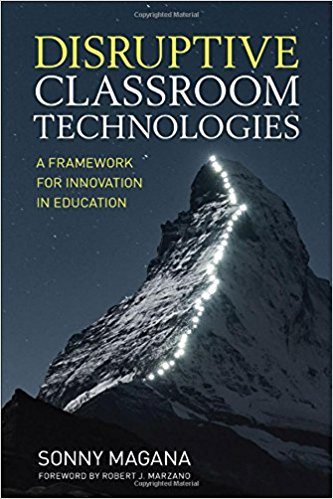
Award-winning author, educator, and spear-header of Washington State’s first CyberSchool, Sonny Magana brings his second piece on the topic of education and technology: Disruptive Classroom Technologies. On the shoulders of Christensen, Horn, & Johnson, Magana aims to not exactly redefine the term “disruptive” but to elucidate its meaning when pertained to technology and explains how disruption adds value to the effects of technology in the classroom.
Managa encourages the user to engage with technology in a way that is translational, transformational, and transcendent. He calls this the T3 Framework which plots a clear and smooth trajectory for how to engage correctly with technology in the classroom. If you are in any way interested in modernizing and maximizing your learner space please snatch up this book that is oh so filled with plans for integrating technology in the classroom. Go ahead and grab two, because once the adjacent teacher sees this model, they’re going to ask how you did it.
10.)Personal Learning Networks: Using the Power of Connections to Transform Education by Will Richardson and Rob Mancabelli
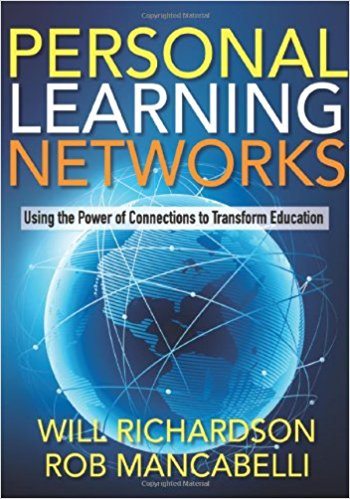
Will Richardson and Rob Mancabelli- both educators, speakers, and strong voices for the power of technology in education- team up to write Using the Power of Connections to Transform Education. This book enhances educator’s understanding of Personal Learning Networks (PLN) and how and why they are an essential focal point for connecting to learners in the 21st-century classroom. This book is practical and visual- you will not leave its pages scratching your head or saying “yeah right, but not in my state.” Many teachers are rather inspired to give PLNs an actual try.
Richardson and Mancabelli have worked in education for decades and understand that building a PLN does not happen over night. Expect to learn how to make the gradual changes that are needed, to your classroom and your professional development. We also really like how Richardson and Mancabelli address the funding argument: when technology is in actuality “disruptive” education budgets include technology. Yes, even in the urban classroom! This is a great book for educators- both teacher and administrators. In fact, it is probably most valuable when both are examining its pages in tandem.
11.)Grown Up Digital: How the Net Generation is Changing Your World by Don Tapscott

Though nearly 10 years old, Grown Up Digital by Don Tapscott may be more relevant then when it was written. I say that because today educators are listening and understanding the value of the learner’s culture and how it informs the classroom experience they are curating. Indeed as educators it our task to understand the experience and motivation of the learners, not to have the learners mold and conform to our motivations.
The second option leads to out-of-date pedagogy that once “worked” or “quite learning environments” that from the untrained eye look like learning. No, it is time to embrace the “net generation” and examine how we can learn from them. This is how, Tapscott argues we truly power-up our learners. We meet them where they are: online. In this version of pedagogy learning happens in any time or place and on the terms of the learners. If compassion is at the core of your educational philosophy, then this book simply must be in your repertoire.
12.)DIY U: Edupunks, Edupreneurs, and the Coming Transformation of Higher Education by Anya Kamenetz
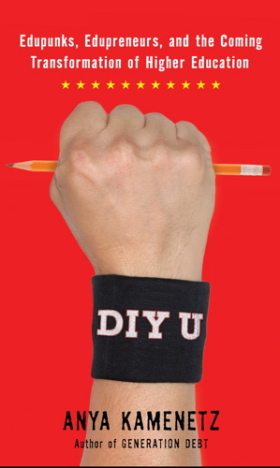
One in six graduates has defaulted on their student loan payments, placing individuals and the US into quite a pricey conundrum. A $137 billion conundrum, to be exact. Anya Kamenetz is that punk rock educator who is thinking outside of the, well… bank. By this we mean that Kamenetz understands the power of open source education, and how to really wield it. In DIY U Kamenetz promotes the anarchist mentality that you can take back what the government wants to hold from you. Well, not fully anarchist as we still need the internet to work, but you get the gist!
She also pinpoints who is being let down by our higher education funding models, low-income people of color who have throughout history been completely failed by education. In this book, expect to learn how to utilize learning networks and paths, engage all types of learners- those who learn in cohorts, independently, through games and more, and of course how to access education through technology. For. Free.Dom
13.)Minds Online: Teaching Effectively with Technology by Michelle D. Miller
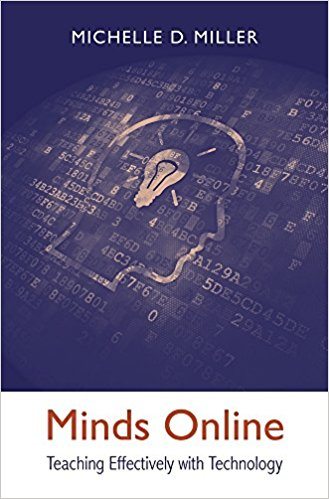
When we think of ringing bells and saliva we think of dogs and Pavlov, right? Or maybe — depending on your field — you think about the brain, technology, psychology and more. Let’s go back to that ding for one second. If you’re reading this, raise your hand if your phone “dings” when a text comes through. What do you do when you hear that ding? I’ll digress. We are all conditioned on what to give our attention to- particularly if that conditioned pings our sympathetic systems (fight or flight). Have you ever felt that technology does exactly this, and sometimes pulls you in more than one direction at once?
There’s a different sound for Facebook, Instagram, Email, and Messages. What is happening to our learning capabilities when much of technology wires us to focus on so many things throughout our day? This is what Minds Online starts with right off the bat: attention. Miller explains that without true attention, learners really can’t learn. In this book, expect to learn how to focus your students first and foremost so that learning can take place.
And contrary to what is becoming a popular belief among seasoned educators, technology does not have to be a distraction in the classroom if the educator does not permit it to be. Based in cognitive psychology, Miller presents guides for “incorporating multimedia effectively.” This piece is great for higher education instructors faced with the task of moving from “traditional ed” to online education, as well as for PreK-16 educators.
14.)#FormativeTech: Meaningful, Sustainable, and Scalable Formative Assessment With Technology by Monica Burns
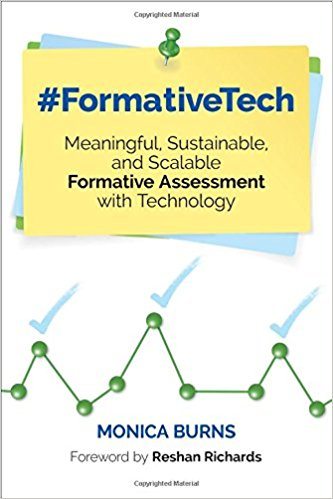
If you are reading this review, you probably know about Formative Assessment. Just in case, however, when you continually evaluate your students’ learning, you are engaging in formative assessment. Apple Distinguished Educator and ClassTechTips.com founder, Monica Burns brings us this hot-off-the press resource for formative assessment.
Formative assessment is essentially about 1:1 attention, though also includes what’s going on in the broader classroom. Burns addresses the issue all educators face with 1:1 assessing: time. In the words of Burns, the goals of formative assessment are two-fold: to “figure out what students understand and where misconceptions or gaps in understanding exist.” This is truly a collaborative effort as teacher leaders across the nation share their experiences on using technology, towards the goal of formative assessment. If you are ready for innovative, user-friendly and practical methods to include technology when you make formative assessments, this book is a must-have.
15.)Amplify: Digital Teaching and Learning in the K-6 Classroom by Katie Muhtaris and Kristin Ziemke

Katie Muhtari and Kristin Ziemke address ways in which to use technology in the K-6 grade classroom from both a micro and a macro perspective. This book is for teachers and is a user-friendly teaching tool that you will want to reach for again and again. I like that Muhtar and Ziemke address mindset for technology as the first barrier for many educators. With so many pressures coming from the board, staff ,and more, it’s essential not to overlook this other (and often times even greater) pressure: the teacher’s own perception. You’re not alone if you think, “I simply can’t add another thing right now.”
Thank you, Muhtari and Ziemke, for speaking up. After you have coached your way into a growth mindset surrounding technology, you’ll be ready to go with the following journey. You no longer need to feel overwhelmed with choosing which technology to integrate and figuring out the “why” and the “how.” Muhtari and Ziemke have done that work like it’s a calling. This is not only a user-friendly resource- it’s trustworthy, and empowering. If you have found yourself almost ready to take the plunge but not quite there, this is the resource that will tip you into the data pool.
16.)Blogs, Wikis, Podcasts and Other Powerful Web Tools for Classrooms by Will Richardson
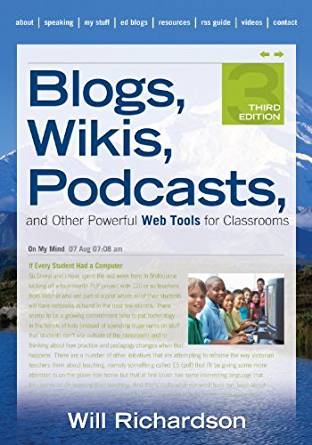
We selected this resource for educators who are looking to augment the learning experience in their classroom. Will Richardson presents inspiration for educators who want to constantly involve and evolve their students’ experiences with technology inside and outside of the classroom. Richardson has been preaching the needs for technology in education for well over a decade. (Caveat: though the latest edition, this book is from 2010.) We eagerly anticipate the 4th edition.
But for now, we greatly appreciate the creative insights within its pages, the step-by-step guides, still-relevant innovative ideas and the challenge to teachers to practice what they preach. After all, how else can you teach with fluency what you don’t constantly practice?
17.)Teaching STEM in the Early Years: Activities for Integrating Science, Technology, Engineering, and Mathematics by Sally Moomaw
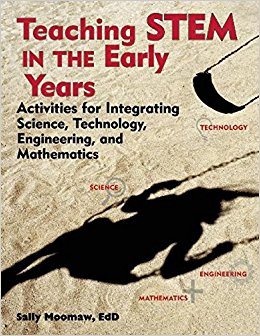
Veteran educator and author Sally Moomaw brings this fantastic resource on the topic of STEM- now sometimes referred to as STEAM (including Arts) or STEM+C (including computational thinking). Though this piece was published in 2013, both STEAM and STEM+C are central to the book.
The material found within these pages is fun and engaging as it should be for all learners. Expect to find enjoyable activities that are project-based, some quick activities that are easily implemented, time outside, methods for creating exciting learning environments, and ideas for engaging field trips. Whether your focus is on STEM, STEAM, or STEM+C programming, you should have this book on your shelf.
18.)Google Classroom: The Ultimate Guide To Making Your Classroom Digital (2017 Updated User Guide, Google Drive, Google Apps,Google Guide, tips and tricks) by Larry Parris

Author Larry Parris unpacks Google Classroom in this updated User Guide on the experience. That’s what Parris does, he writes user-friendly manuals on technology and he does it well! This book is perfect for administrators who are looking to implement a Google Classroom in their school, individuals who have just begun, as well as individuals who are looking for reference along the journey.
Additionally, content is relevant to parents and ancillary professionals alike. You will learn how to “create a lesson,” “work across classes (network)” creating engaging team projects ,”reduce cheating,” and more with this fantastic and up-to-date manual. Google Classroom is more than just a technology tool, it is one means to “Hook a New Generation of Users”
19.)Social Media Wellness: Helping Tweens and Teens Thrive in an Unbalanced Digital World by Ana Homayoun
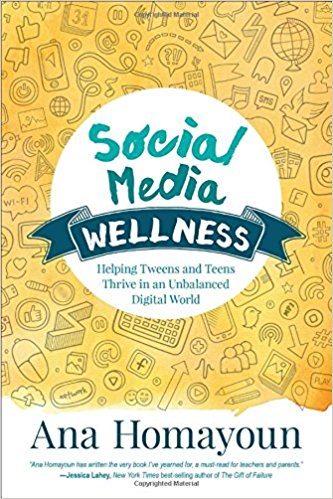
Author, founder, and expert on millennials Ana Homayoun brings to us her latest work Social Media Wellness. This book was published last month (August, 2017) so really hasn’t had enough time to rack up the 5 star reviews. Perhaps this is why it is placed 19th in our list and perhaps in a matter of months we will update it to rank much closer towards the top. Having said that, I sincerely hope that you grab this book to address the issues millennials face today.
Are you ready to stop spinning your wheels trying to keep track of every issue tweens face in today’s world? Good, me too! Homayoun does a phenomenal job walking educators through the problems and, wait for it… the solutions that educators encounter when confronting the social media world. In these pages expect to learn about how social media affects education, a trajectory of social media’s impact throughout its brief — yet potent — history, social media’s cognitive affect on tweens, and much, much more. Homayou even addresses self care by discussing sleep, stress management, exercise, and safety. Administrators, educators, and parents rejoice: the flagship book on social media wellness has finally arrived!
20.)Integrating Educational Technology into Teaching (6th Edition) by M.D. Roblyer and Aaron H. Doering
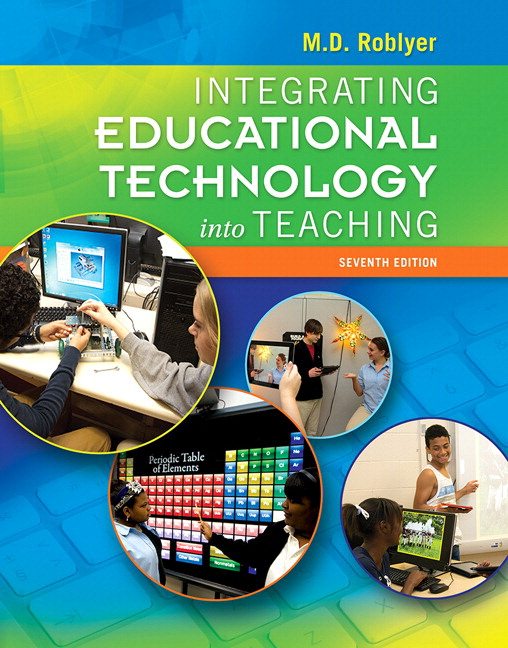
Integrating Educational Technology into Teaching is an introductory textbook on integrating technology in education. In its 6th edition, Integrating Educational Technology will have some out-of-date material- but as with educational technology textbooks, this will almost always be the case. Try to see past that and look at the parallels required in your field. As a textbook, you will find some of the usual suspects like the practice sections, examples, and encouraged in-the-moment reflections.
Even though you may not be “in school,” embrace them! Though a tad more dry than some of our other picks, we like this textbook because it is comprehensive and will be one to return to as you progress through your career. Happy reading!
